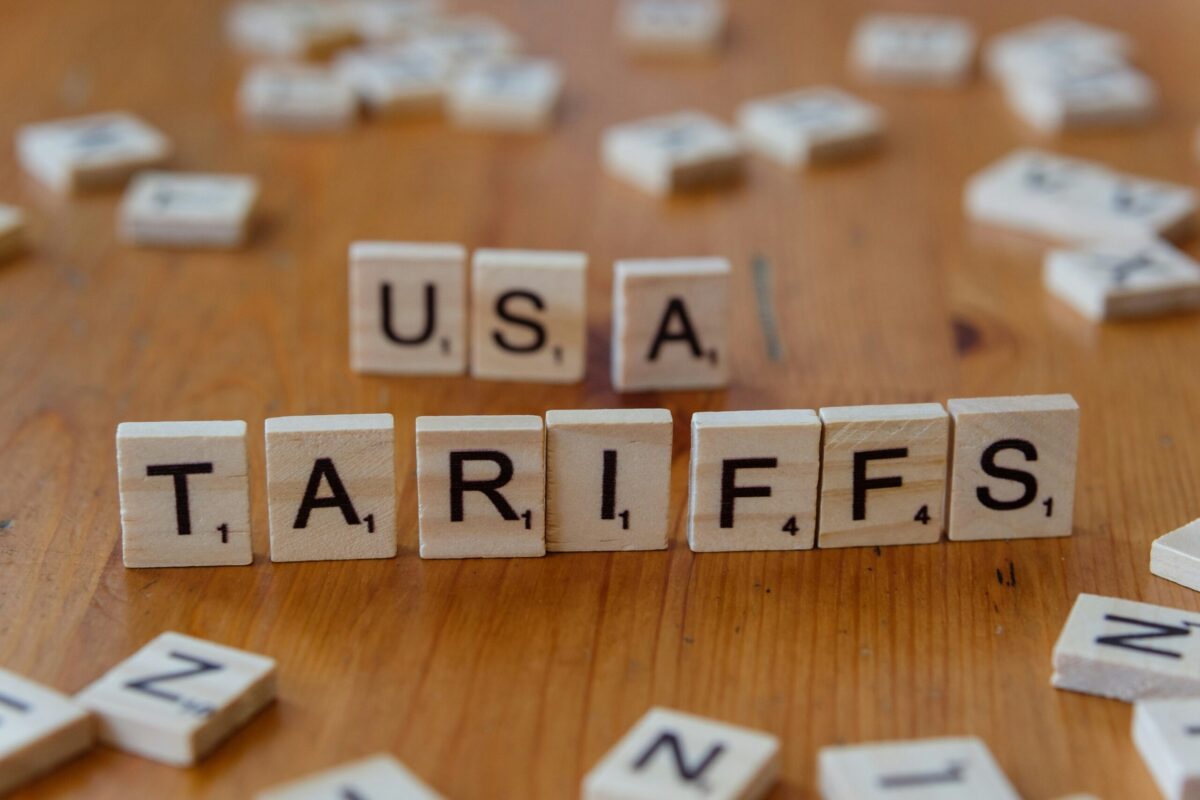On 2 April, US President Donald Trump introduced a sweeping new tariff plan that sent shockwaves through global markets.
The tariffs, which are set to take effect in early April, will impose broad duties on imports and escalate tensions with key US trading partners.
This move comes as part of Trump’s strategy to reshape global trade and reduce the United States’ trade deficit.
Trump’s announcement from the White House Rose Garden outlined a significant shift in US trade policy. He unveiled a baseline 10% tariff on all imports, with additional targeted tariffs on 60 countries that the US considers the largest trade offenders.
The new tariffs, which could rise as high as 50%, will impact various sectors and are intended to put pressure on foreign nations to align with US trade practices.
Among the countries hit hardest are the European Union (EU), Japan, and China. The EU will face a 20% tariff, while Japan will experience a 24% levy. China, already facing existing tariffs, will now be subject to a combined 54% tariff on key goods.
Some Southeast Asian nations, such as Cambodia, Laos, and Vietnam, are facing even steeper penalties, with tariffs approaching 50%.
However, Mexico and Canada will be spared from the most severe measures, and the UK will only face the base 10% tariff, possibly hinting at improving trade relations.
The new tariffs are being implemented under emergency powers, with the justification that they are necessary for national economic security.
While some exemptions exist—such as for critical goods like energy, semiconductors, and medicines—the administration signalled that more investigations could lead to additional duties in the future.
These tariffs are aimed at reducing the US trade deficit, boosting domestic manufacturing, and increasing government revenue.
Immediate impact on financial markets
The reaction to the tariffs was swift and dramatic. Global financial markets, including the cryptocurrency sector, were thrown into turmoil. In the wake of the announcement, stock markets across the world experienced sharp declines, and crypto markets followed suit.
Bitcoin ($BTC), which had previously reached an all-time high of $88,500, saw a drop of 2.6%, falling back to around $83,000. Ethereum ($ETH) dropped from $1,934 to $1,797, and the total crypto market capitalisation plummeted by 5.3%, reaching $2.7 trillion.
Some market analysts, however, were less concerned. Trader Michaël van de Poppe shared his belief that the tariffs “won’t be as bad as the entire population expects them to be”.
He suggested that uncertainty would eventually fade and that gold would lose its value while altcoins and Bitcoin might rise in the wake of the news.
Meanwhile, the founder of BitMEX, Arthur Hayes, warned that the tariffs might decrease the demand for US Treasurys, necessitating action from the Federal Reserve to stabilise the market. Hayes also suggested that the printing of more money by the Fed could have a positive impact on Bitcoin’s price.
While some analysts remained cautiously optimistic, the reaction in the crypto sector was far from reassuring. The volatility led to over $500 million in liquidations, as traders scrambled to adjust to the changing market dynamics.
Many of these liquidations were concentrated in Bitcoin and Ethereum futures contracts, leading to significant losses for over-leveraged traders.
Implications for Bitcoin mining industry
The impact of the tariffs is not just felt by cryptocurrency traders; it is also making waves within the Bitcoin mining industry.
The introduction of tariffs on mining equipment, especially hardware imported from Asia, has left American crypto miners worried about the future of their operations.
Many of the mining rigs that miners rely on are manufactured in countries like China, Malaysia, and Thailand, and with the new tariffs in place, the cost of acquiring these rigs is expected to rise sharply.
An analyst at Blockware Solutions, Mitchell Askew, stated that the tariffs would have “MASSIVE implications for Bitcoin miners”, particularly due to the expected increase in demand for on-shore miners. He predicted that mining rig prices could skyrocket by 5 to 10 times, similar to the price surge experienced in 2021.
The CEO of Blockware, Mason Jappa, also expressed concern, stating that the tariffs would have “a major impact” on the industry, as the majority of Bitcoin mining servers were coming from Southeast Asia.
As a result of the impending tariff changes, some mining companies are rushing to secure their equipment before the new duties take effect.
The head of hardware at Luxor Technology, Lauren Lin, told Bloomberg that her firm was “scrambling” to find creative ways to bring mining rigs into the country ahead of the tariffs. “Ideally, we can charter a flight and get machines over”, Lin said.
Controversy over tariff calculation methods
One of the most controversial aspects of the tariff announcement was the methodology used by the Trump administration to determine the tariff rates. The White House charts presented at the event showed a range of numbers for each country, but many questioned how these rates were calculated.
Some critics suggested that the administration had relied on an overly simplistic approach, where the tariff rates were determined by dividing the US trade deficit with a country by that country’s total exports to the US.
The editor of the Yale Review, James Surowiecki, criticised this method as “extraordinary nonsense”. He argued that the administration had failed to take into account various factors such as non-tariff barriers and currency manipulation, which could affect trade relations.
Some social media users even suggested that the Trump administration might have used ChatGPT, an AI model, to generate the list of countries and their corresponding tariffs. DCinvestor, a well-known non-fungible tokens (NFT) collector, shared his experience of replicating the list using the AI chatbot, sparking widespread speculation.
Additionally, the list included countries that are unlikely to be significant trade partners with the US, such as the uninhabited Heard and McDonald Islands.
These islands, located in the remote Southern Ocean, are subject to a 10% tariff due to their own 10% tariffs on US goods, despite there being no actual trade with the islands.
Reactions and criticism from experts
The announcement of the new tariffs has provoked a strong response from financial experts and analysts, with many expressing concerns about the long-term effects on the US economy and global trade relations.
The CEO of deVere Group, Nigel Green, described Trump’s approach as “economic delusion”, warning that it could destabilise global trade and harm the US economy.
Similarly, a partner at Cinneamhain Ventures, Adam Cochrane, criticised the tariff strategy, pointing out that the US lacks the factories, labour, and raw materials to offset the increased costs of imports.
Some observers have raised the possibility that the tariffs could push the US economy toward a recession. Goldman Sachs had already estimated a 35% chance of a recession in the US prior to the tariff announcement, and betting markets have now raised that estimate to over 50%.
Trump, however, remains steadfast in his belief that the tariffs will strengthen the US economy and make it more competitive on the global stage, claiming that the Great Depression could have been avoided if tariffs had been maintained during that time.
The historical context of tariff policies is significant. The Smoot-Hawley Tariff Act, signed into law in 1930, raised tariffs on over 20,000 imported goods and is often cited as a contributing factor to the deepening of the Great Depression.
Critics of Trump’s new tariffs fear that they could lead to similar economic challenges, particularly as other countries may retaliate with their own tariffs on US exports.
As the new tariffs are set to take effect, global markets, including the cryptocurrency sector, are likely to experience continued volatility. While some market participants believe that the tariffs will have limited long-term impact, others are concerned about the broader economic consequences.
The US stock market, for example, saw sharp declines following the announcement, with tech stocks taking a major hit. Gold prices, on the other hand, surged to new all-time highs as investors sought safety in traditional assets.
For the crypto market, the immediate aftermath of the tariffs has been marked by significant liquidations, with over $500 million in futures positions wiped out within 24 hours.
For the crypto market, the immediate aftermath of the tariffs has been marked by significant liquidations, with over $500 million in futures positions wiped out within 24 hours.
Bitcoin and other major cryptocurrencies experienced sharp price declines, and the overall market cap of digital assets fell by more than $100 billion.
Despite these challenges, many in the crypto community remain optimistic about the future. The core fundamentals of blockchain technology and the increasing institutional adoption of digital assets continue to provide hope for long-term growth, even in the face of uncertainty.


